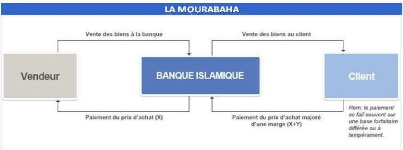Taking Control Of Your Online Information: A Guide To Deletion

Table of Contents
Understanding Your Online Presence
Before you begin the process of online data deletion, it's crucial to understand the extent of your digital footprint. Knowing where your information resides is the first step towards reclaiming your privacy.
Identifying Data to Delete
Before initiating any online information deletion, you need a comprehensive inventory of your online presence. This involves identifying every platform and website where your personal data might be stored. This includes but isn't limited to:
- Create a list of all accounts and websites: Start by brainstorming. Think about social media (Facebook, Instagram, Twitter, TikTok, etc.), online forums, e-commerce sites (Amazon, eBay, etc.), dating apps, gaming platforms, subscription services, and any websites where you've registered an account or provided personal information.
- Consider using a password manager: A password manager can help you efficiently access and organize your numerous online login credentials, making the data deletion process smoother.
- Research each platform's privacy settings and data deletion policies: Each platform has its own procedures for data deletion. Familiarize yourself with these policies before attempting to remove your information. Understanding these policies is key to effective online information deletion.
Assessing the Risks of Incomplete Deletion
Leaving traces of your data online carries significant risks. Even seemingly minor details can be pieced together to create a complete profile, potentially leading to:
- Data breaches: Even after deletion, data may persist in backups or archives, making it vulnerable to breaches.
- Persistence in cached versions: Search engines and browsers often cache web pages, meaning copies of your information may still be accessible even after you've deleted the original content.
- Third-party data retention: Many websites share data with third-party services for advertising or other purposes. These third parties may retain your information long after you've deleted your account.
Deleting Information from Major Platforms
This section focuses on practical steps for removing your data from major online platforms. Remember, "deactivating" an account often doesn't equate to complete data deletion. We’ll focus on permanent removal.
Social Media Account Deletion
Deleting social media accounts requires careful attention to detail. Each platform has a unique process. While specific steps change occasionally, the general process usually involves accessing account settings and initiating a deletion request.
- Facebook account deletion process: Navigate to Settings & Privacy, then Account Settings, and finally locate the "Deactivation and Deletion" section. Facebook provides detailed instructions within the platform.
- Twitter account deletion process: Similar to Facebook, Twitter usually provides a dedicated section within account settings to initiate account deletion. You’ll often need to confirm your decision before the process begins.
- Instagram account deletion process: The process is largely similar across major social media sites; find the settings menu and look for an option to delete your account. Expect a confirmation or waiting period.
- LinkedIn account deletion process: While LinkedIn may offer an option to deactivate your account temporarily, you may need to contact their support team directly to request complete account deletion.
Removing Information from Search Engines
Google's removal tool allows you to request the removal of specific URLs from search results. It’s important to understand this doesn't delete the information itself; it simply makes it less likely to appear in Google search results.
- Explain Google's removal request process: Google's removal tool requires you to identify URLs containing your personal information that you want removed. They review these requests and assess if they meet their criteria for removal.
- Discuss the limitations of search engine removal tools: Removal isn't guaranteed. Google might refuse requests that don't violate their policies. Also, other search engines may still index the information.
- Mention other search engines and their removal policies: Bing, DuckDuckGo, and other search engines have their own policies and procedures for removing content from their indexes.
Beyond Social Media: Comprehensive Online Information Deletion
Online information deletion extends beyond major social media platforms. This section delves into other avenues for controlling your online presence.
Deleting Online Reviews and Comments
Many review sites allow users to modify or delete their contributions. However, the process may vary across different platforms.
- Explain the process for each platform: Review sites like Yelp, TripAdvisor, and Amazon generally have options within your account settings to edit or delete reviews and comments. However, some content may be impossible to delete if it's already been widely shared or incorporated into the platform's aggregated data.
- Highlight any limitations or difficulties in deleting user-generated content: Some platforms may not allow deletion at all, while others might require contacting customer support.
Managing Your Online Reputation
Monitoring your online presence is crucial for identifying and addressing unwanted information.
- Explain the importance of online reputation management: A proactive approach to online reputation management helps you control the narrative around your online identity and address any inaccuracies or damaging content.
- Introduce relevant tools and services: Various reputation management tools can help you track mentions of your name or information online and manage the content appearing in search results.
Dealing with Data Brokers
Data brokers collect and sell personal information. Requesting data deletion from these companies can be challenging but is a vital aspect of comprehensive online information deletion.
- List resources and guides for finding and contacting data brokers: Several websites and organizations provide lists of data brokers and resources for submitting data deletion requests.
- Discuss the challenges of dealing with data brokers: The process can be time-consuming and complex, as data brokers may not always respond promptly or comply with your requests.
Conclusion
Regaining control over your online information through effective deletion is crucial for privacy and security. By following the steps outlined in this guide, you can significantly reduce your digital footprint and mitigate potential risks. Remember, completely removing all traces of your online information is a complex, ongoing process. Regularly review your online presence and take proactive steps for consistent online information deletion. Start taking control of your digital life today!

Featured Posts
-
 Nutriscore Au Petit Dejeuner L Analyse Des Produits Morning Retail
Apr 23, 2025
Nutriscore Au Petit Dejeuner L Analyse Des Produits Morning Retail
Apr 23, 2025 -
 Erzurum Valiligi Karar Aciklamasi Okullar Tatil Mi Degil Mi 24 Subat
Apr 23, 2025
Erzurum Valiligi Karar Aciklamasi Okullar Tatil Mi Degil Mi 24 Subat
Apr 23, 2025 -
 1 050 Price Hike At And T On Broadcoms Proposed V Mware Cost Increase
Apr 23, 2025
1 050 Price Hike At And T On Broadcoms Proposed V Mware Cost Increase
Apr 23, 2025 -
 Alterya Acquired By Chainalysis Boosting Blockchain Security With Ai
Apr 23, 2025
Alterya Acquired By Chainalysis Boosting Blockchain Security With Ai
Apr 23, 2025 -
 Program Tv Ramadan 2025 Jadwal Acara Terbaik Untuk Menemani Waktu Berbuka Dan Sahur
Apr 23, 2025
Program Tv Ramadan 2025 Jadwal Acara Terbaik Untuk Menemani Waktu Berbuka Dan Sahur
Apr 23, 2025
